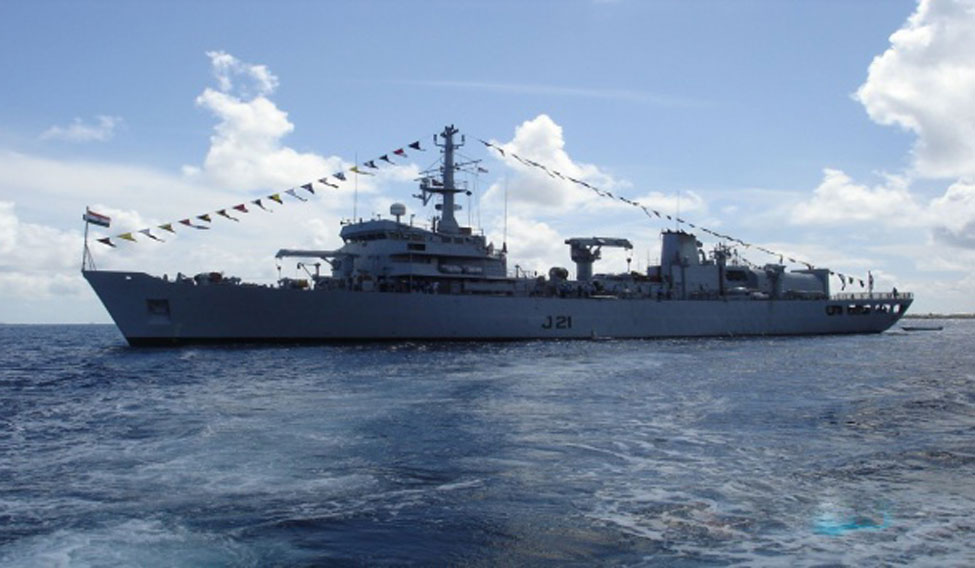Even as Prime Minister Narendra Modi concluded his visit to Sri Lanka, the Indian Navy concluded a joint survey of the Lankan coast, and handed over two charts and reports to the Lankan Navy.
The hydrographic survey was conducted by the Indian Navy Hydrographic Department and Sri Lanka Navy Hydrographic Service, from Colombo to Sangamankanda—approximately 41,600 square kilometres (12,150 square nautical miles). Captain Peush Pawsey, commanding officer of the survey ship INS Darshak, handed over two fair sheets of “Colombo to Sangamankanda”and “Weligama Bay”to the Vice Admiral R Wijegunaratne, commander of the Lankan Navy.
The survey, first of its kind on the Lankan coast, began on March 29 and was completed in a record time of six weeks, thanks to the use of technologies such as multi-beam sounding and single-beam sounding side scan sonar which are available on INS Darshak. Lankan Navy officers and sailors had embarked Darshak and were trained on various aspects of hydrographic surveying.
INS Darshak, incidentally, had also surveyed the coasts of Mauritius, the Seychelles, Myanmar, Mozambique and Tanzania in the last few years.
“Sri Lanka is a signatory state of SOLAS (Safety of Life at Sea) Convention. The country is obliged to provide and make available updated hydrographic information to the mariners,”said an officer in the Sri Lankan high commission in Delhi. “This updated nautical hydrographic information will replace centuries-old nautical data available in the existing charts. Our hydrographic service expects will publish this information through new national series paper charts and electronic navigation charts in the coming months. The move will benefit the large international shipping traffic passing the southern coast of Sri Lanka.”
The completion of the survey comes days after Sri Lanka rejected a request by the Chinese Navy to dock at a Lankan port and pick up supplies. Colombo is understood to have rejected the Chinese request at the behest of India.
The visit by a Chinese submarine to a Lankan port two years ago had ruffled Indian sensitivities. Since then the two countries have been trying to reinvigorate their naval ties. Indian Navy chief, Admiral Lanba visited Sri Lanka in December to take part in the 7th International Maritime Conference, called the Galle Dialogue.
Then in January, India sent its largest warship, INS Vikramaditya, on its first overseas visit to Colombo, along with destroyer INS Mysore. In February, Lankan ships arrived at Visakhapatnam for the International Fleet Review.
Lankan Navy chief Vice Admiral R.C. Wijegunaratne visited Delhi in late January and held talks with the three Indian military chiefs, the chief of the Indian coast guard and the defence secretary. One of the points of discussion was hydrographic cooperation. In April, Indian Coast Guard Ship CGS Shoor visited Colombo and held sea training exercise for Sri Lanka Coast Guard officers and sailors.
Since then Colombo has also rejected Chinese requests for naval facilities at Lankan ports. Sri Lanka had been thinking of leasing its Hambantota port to China for 99 years, but local trade unions have also been opposing the move, much to India's cheer. Lanka is now learnt to have assured India that Hambantota will be used only by the Lankan Navy.





